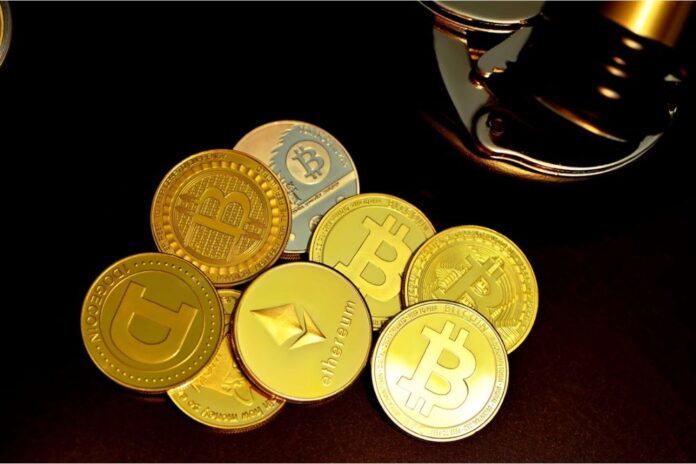The world of cryptocurrency can be complex and overwhelming at times, especially for those who are new to the market. One concept that is essential to understand is the process of burning cryptocurrency. In this article, we’ll dive into what it means to burn crypto, how it works, and why it’s important to the cryptocurrency ecosystem.
What is cryptocurrency burning?
When we talk about burning cryptocurrency, we’re referring to the process of permanently removing digital coins or tokens from circulation. This can be done for a variety of reasons, including reducing the total supply of a particular currency, maintaining a healthy price level for the currency, rebranding a currency or project, or destroying stolen or compromised currency.
Burning cryptocurrency is often accomplished by sending the coins to an address that is unobtainable or not accessible, such as an address with no private keys or the address of an unknown wallet.
Reasons for burning cryptocurrency
Maintaining a healthy price level for the currency
Burning cryptocurrency can help maintain a healthy price level for the currency. By reducing the total supply of coins in circulation, the value of the remaining coins can increase.
Reducing the total supply of the currency
Planned burns are often used as a way to reduce the total supply of a currency. By decreasing the supply, the value of the remaining coins can potentially increase.
Destroying stolen or compromised currency
In some cases, a currency might be stolen, compromised, or otherwise rendered unusable. In such instances, the cryptocurrency may be burned to ensure it does not fall into the wrong hands or devalue the currency.
Rebranding the currency or project
Burning cryptocurrency can be used as part of a rebranding effort, and it can be seen as a way to signal a fresh start for a currency or project.
Examples of cryptocurrency burning
Bitcoin burning
Bitcoin does not have a “burn address”; however, it does have a halving mechanism that helps to control the supply. Bitcoin halving occurs every 210,000 blocks. When halving occurs, the amount of Bitcoin rewarded to miners is reduced by 50%. The last halving happened on May 11, 2020, when the reward was reduced from 12.5 bitcoin per block to 6.25 bitcoin per block.
Ripple burning
Ripple, the sixth-largest cryptocurrency by market capitalization, has adopted a unique strategy for burning its digital currency (XRP). The company has set aside 50 billion XRP tokens to be used for incentivizing market makers to increase the market for XRP coins. Any unused XRP incentivization funds are returned and then destroyed, effectively “burning” them.
Binance Coin burning
Binance Coin (BNB) is a token issued by Binance, one of the world’s largest cryptocurrency exchanges. The exchange has a policy of burning BNB every quarter based on the amount of trading volume that occurs on the exchange. The number of coins burned is proportional to the trading volume on the exchange.
Also, Ethereum has a mechanism known as “EIP-1559,” which burns a portion of the transaction fees paid by users on the network. These burned fees are removed from circulation forever, reducing the total supply of Ethereum in circulation and potentially increasing its value.
Similarly, Tether (USDT) has also burned tokens in the past as a way to reduce its total supply. This is often done in response to market conditions, such as when demand for USDT drops and the company wishes to maintain the token’s value. By burning tokens, Tether can artificially increase scarcity and potentially support the price of USDT on cryptocurrency exchanges.
Criticisms of cryptocurrency burning
Concerns about centralization
One potential criticism of cryptocurrency burning is that it can result in centralization. If a small group of people or companies control the majority of a currency’s supply, they have the power to manipulate the market to their advantage.
Environmental impact of burning
Critics argue that cryptocurrency burning can have a negative impact on the environment. The process of “burning” coins requires a significant amount of energy, which can lead to an increase in greenhouse gas emissions.
Conclusion
The burning of cryptocurrency is an essential component of the crypto ecosystem. It allows for the reduction of supply to maintain healthy price levels, provides a mechanism to destroy or rebrand tokens, and can help ensure that compromised coins do not remain in circulation.
As the cryptocurrency market continues to evolve, we can expect to see more unique burning mechanisms. Although there are potential negatives, such as centralization and environmental impact, the benefits for investors and the broader cryptocurrency ecosystem make it an essential element of the crypto market. By understanding cryptocurrency burning, you can better navigate the market and make more informed decisions when it comes to investing in cryptocurrencies.
Follow us on Twitter, Facebook, Telegram, and Google News


